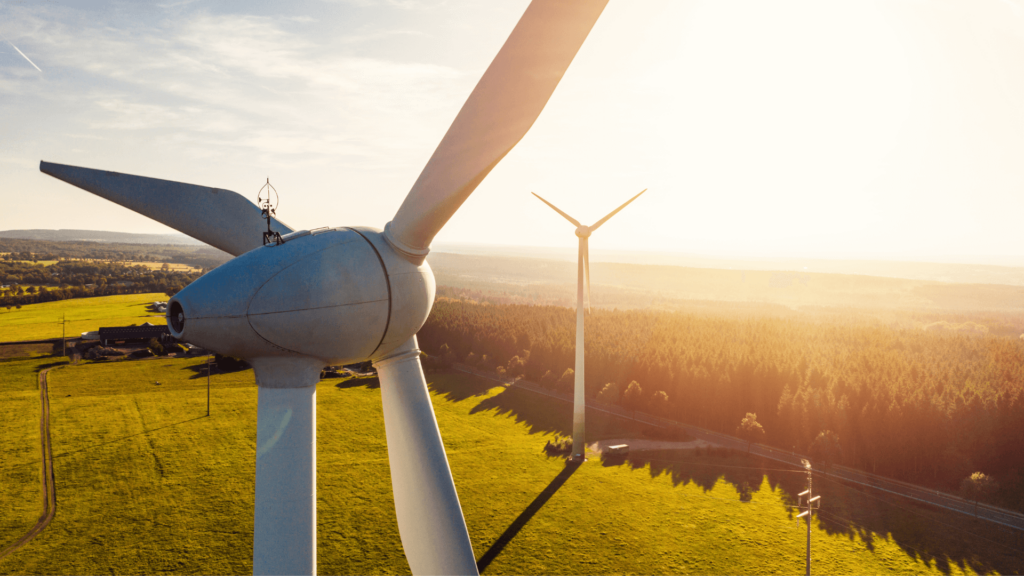Electricity consumers entering a new universe
This is the first installment of the Topic of the Month: Energising Engagement. Unleashing Customer Potential in the Power Sector
The energy landscape is swiftly changing, leading to a profound transformation in how we perceive electricity consumption and consumer behaviour. This Topic of the Month unveils critical facets of this transformation. After exploring the rise of a new energy universe, we delve into the intricacies of consumer decisions within a liberalised energy market, and we conclude by addressing the barriers to customer engagement in flexibility markets.
Forget what you knew about electricity consumption and electricity consumers.
It is not a question of new landscape or environment anymore. And it would be too “cliché” to call that a revolution. Let’s consider the current new era as something radically new: a new universe.
A new universe, as it is four times new in four fundamental directions. First, what was a “unilateral top-down distribution service” is challenged by new technologies and new usages; where energy networks cannot work properly anymore without a fully interactive twin network of information. Second, this new configuration is nurtured from outside the regulated grid: “Behind the Meter”; where the formerly passive consumers become investors, changing themselves into active prosumers or prosumagers. Third, operating these new technologies and delivering the corresponding new services greatly benefit from a new transaction space, which frames and tunes players’ expectations as never before, and guides their operations and delivery accordingly; thanks to a deep micro-digitalization down to the smaller units and smaller players. Fourth, all these gigantic transformations do not exclusively stem from some individual initiatives chosen by private parties at their will; they are now rooted in a fundamental tsunami of public policies that will remain in place for decades: it is the coming thirty years of Net Zero GHG emissions public policy push towards 2050.
Let’s consider these four fundamental novelties one by one.
- The distribution network serving residential consumers and SMEs was famous for its top-down one-way flows, and the high passivity of these consumers. In practice they were only the installed devices which used to withdraw energy, according to choices made by their manufacturers; and the two main actions of the so-called consumers were to buy consuming devices ex ante and to pay ex post for the energy bills these devices triggered. Electricity flows were coming from the transmission grid, and the core of the distribution grid management strategy was to adapt the grid to the load peak, according to the famous “fit and forget” principle. With the entry of “distributed generation” (solar PV or small wind turbines), distribution grids were to discover two-way flows in their operation. Electrification of the mobility with EVs was also able to offer two-ways operation. And individual storage units widened again the possible choices for active consumers-investors. Then, distribution grids became fully interactive new systems, having to operate differently and to coordinate differently with the transmission level. Smart grids for the system operation, and smart meters for the consumption units, became a basic digital standard for grids’ day-to-day performances. What was previously conceived as a network of electricity flows had to be matched by a parallel network of information for control and decision making, with a working definition of data format, data operation and data interoperability, to make these twin networks work as a much more interactive system than ever before. 1
- This new configuration is being nurtured from outside the regulated grid: “Behind the Meter”. Where the formerly passive consumers can now take their own investment decisions (in the range of 1kW to 1MW), with typically embedded individual technology choices. Alien to the previous hierarchical order of electricity systems, where big generating plants (in the range of 300 MW to 1,500 MW) combined their output according to a central dispatch responding to wholesale markets’ incentives. These new active consumers are not strictly consumers in the old meaning, as they produce and self-consume (as prosumers), or even store, produce and consume (as prosumagers). This means that they have much stronger incentives to stay active in the system operation. And that they always react to all the decisions taken by the other system players (be they the traditional generators, the regulated grids and the regulator). Active consumers can “strike back” when the traditional players play… The new techs seen in the former paragraph (distributed generation, EVs, individual storage units) are joined by new techs of “demand response”, such as home energy management systems, creating an entire field of independent investment and independent operation of electricity flows: the famous “Behind the Meter”. What was a hierarchical set of two top-down levels (Transmission – Distribution) is becoming an interactive multilevel system: Transmission – Distribution – Behind the Meter.2
- The transformations seen in the previous two paragraphs (new techs, new usages, and new players at consumption’s edge) would not have the same impact if they were not benefiting from a new transaction space. “Transaction & transacting” were not taken as very serious factors (except in “transactional economics”) before the spectacular growth of digital intermediaries (as Amazon, Uber or Airbnb). The capability of precisely enough defining the key characteristics of a product, of tracking the exact identity of each buyer and seller, of verifying the actual delivery and payment, etc. helps creating new exchange opportunities, new types of service, in a new space for transactions. The simpler and more symptomatic example is the “aggregator”: literally a digital intermediary buying small reductions of consumption and reselling them as regular units in the centralized wholesale market, or in a decentralized local market. An absolute ‘nano’ extreme is given by “peer-to-peer” trade, where sellers, buyers and products are all of the small consumption unit’s size. A significant side effect of the active digitalization of energy transactions is the voluntary aggregation of individuals into a single unit of collective action: an energy community. Another one is the transformation of a traditional energy supplier into an innovative energy service business, which can manage the coordination of all the new techs available to a single consumption unit (as the UK company Octopus offering to manage individual PV, EV, demand response and garage storage in liaison with the traditional markets). Alternatively, a supplier can specialize in the management of only one single device in a given consumer portfolio (as charging & discharging the EV); benefiting there from a protective “sub-metering” regulation which destroys the former monopoly of traditional suppliers on each metering point.3
- It is normal life of market-based economies that new techs, new usages and new transactional tools combine into new business models which develop as long as they are successful in the markets. The fact that electricity systems have highly regulated blocks at their core (such as transmission and distribution operation; central and local market designs; metering, retail contracts and suppliers’ obligations) implies that not every innovation will automatically flourish only because it appeared once somewhere. The pressure exerted by incumbent players and incumbent regulation is considerable, and regulatory authorities are rarely pushed by very favourable “political economy” forces to revisit the existing frameworks. However, something else –being very big – is now different. These new techs, new usages, new transactional tools and new business models are actually tied to the deep new trends redefining the public policy priorities in the electricity sector. In many places, electricity is becoming the energy vector favoured to push decarbonisation of all energy consumption. Cleaning existing electricity supply and electrifying most of the remaining fossil fuel-based consumption is a credible policy strategy to fight climate change and reach net-zero emissions. In these circumstances, the fight between the innovative fringe and the incumbent rear-guard is not a pure re-make of traditional market-based industry fights. The long-run public interest of society is favourable to the new techs, new usages, new transactional tools and new business models. In the European Union, each new piece of European legislation or implementation act pushes things ahead in this direction. In the US, the landscape is more diverse, as individual states (as California…) play a more relevant role; but the recent federal caterpillar named “Inflation Reduction Act” has launched a new federal attack against “business as usual”… Step by step, electricity systems in the EU and the US – and in Australia as well – are transforming the fundamentals of the electricity industry to move more favourably to the “new universe of electricity consumption”. And this is to stay on the radars of everyone for the decades to come…4
1- The interested reader can deepen his knowledge by looking at R. Poudineh, C. Brandstätt & F. Billimoria, “Electricity Distribution Networks in the Decentralisation Era. Rethinking Economics & Regulation”, Palgrave McMillan, 2022 and V. Reif, A. Nouicer & L. Meeus, “Interrface. Report on the foundations for the adoption of new network codes”. Florence School of Regulation, RSCAS-EUI, 2023.
2- The interested reader can deepen his knowledge by looking at Fereidoon Sioshansi, “The Future of Decentralized Electricity Distribution Networks”, Elsevier 2023 and Fereidoon Sioshansi, “Behind and Beyond the Meter. Digitalization, Aggregation, Optimization, Monetization”, Elsevier 2020.
3- The interested reader can deepen his knowledge by looking at J-M Glachant & N. Rossetto, « A New World for Electricity Transactions: Peer-to-Peer and Peer-to-X”, WP Florence School of Regulation, RSCAS-EUI N°56, 2021; published in Economics of Energy and Environmental policy (EEEP), 2021, Vol 10, No 2, pp 41-55 and C. Brandstätt & J-M Glachant, “Mechanisms for regulation of Distribution in the EU”, Chap 5 of the “Handbook on Electricity Regulation”, ed. by J-M Glachant, P. Joskow & M. Pollitt, Edward Elgar Publisher, forthcoming 2024.
4- The interested reader can deepen his knowledge by looking at Nathalie Tocci, A Green and Global Europe, Polity Press, 2023 and Paul Joskow, “From hierarchies to markets and partially back again in electricity: responding to decarbonization and security of supply goals”, in Journal of Institutional Economics, 2022, 18, pp 313-329.






